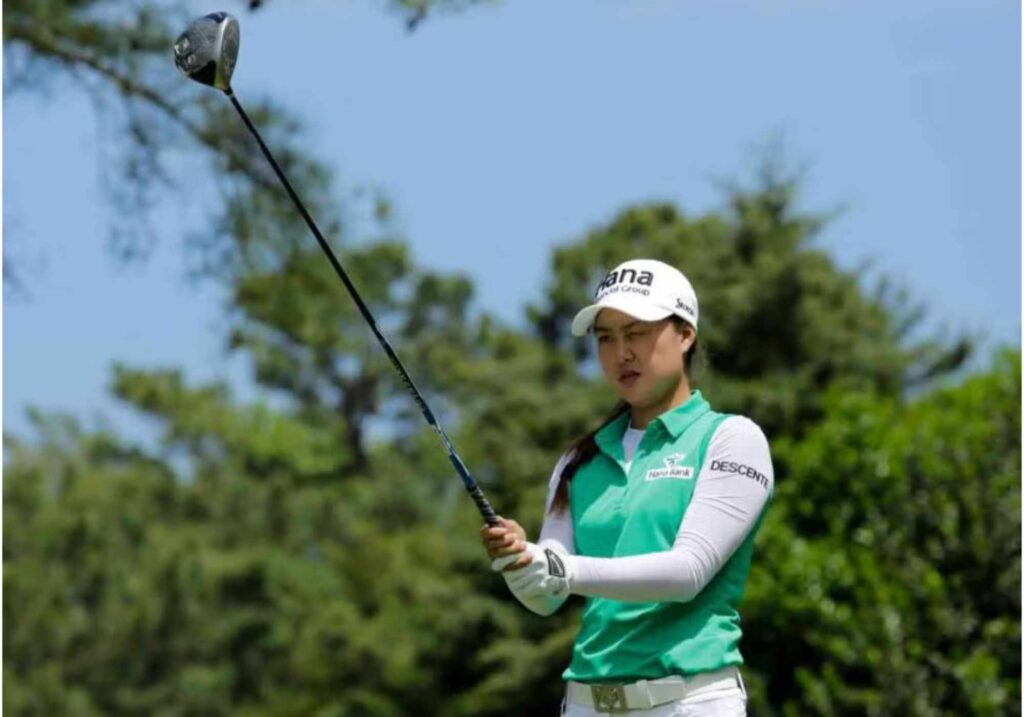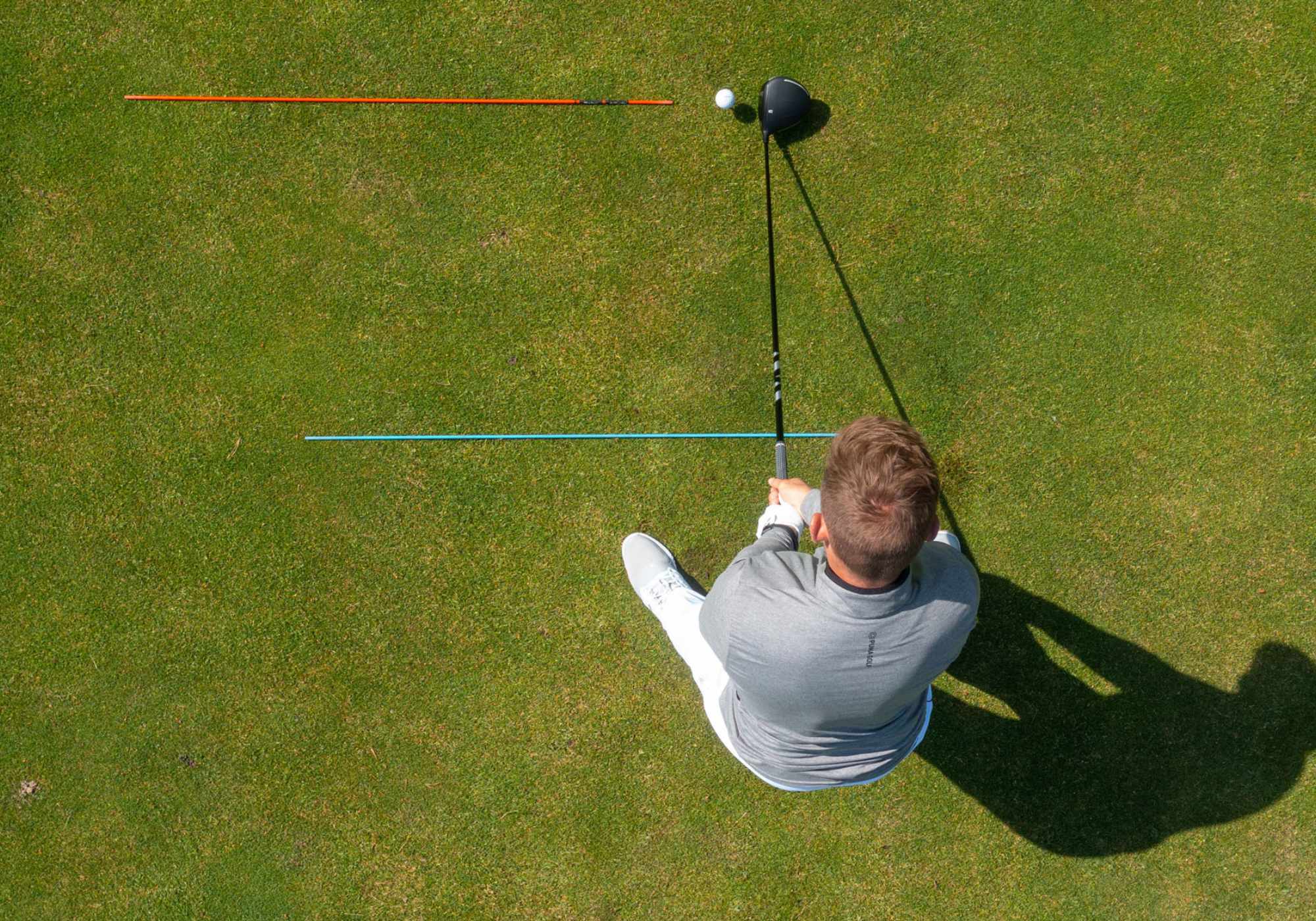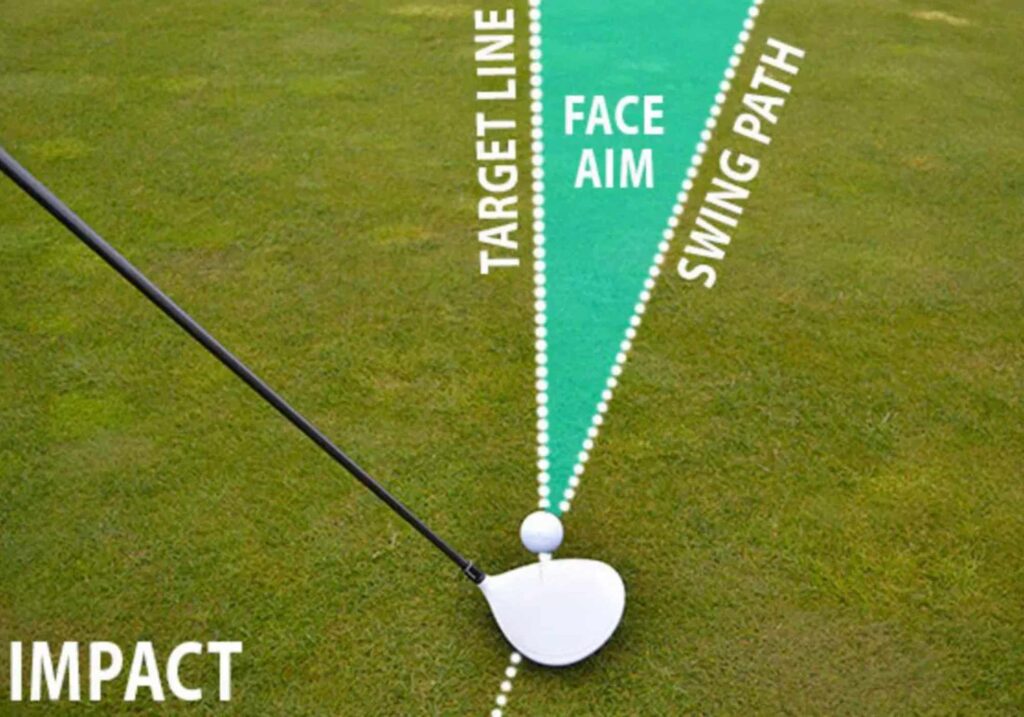When most golfers think about shaping the ball — hitting draws, fades, or even intentional hooks and slices — they imagine it’s something reserved for scratch players or pros on Tour. But the truth is, ball flight control starts with something very simple: aim and alignment.
Whether you’re trying to straighten out your miss or finally learn how to curve the ball on purpose, understanding how aim, alignment, and face angle work together is the key.
Let’s break it down.
Understanding the Basics: Aim vs. Alignment

Before we shape anything, we need to clear something up.
- Aim refers to where you want the ball to start — it’s the direction your clubface is pointed at address.
- Alignment is how your body lines up — shoulders, hips, knees, and feet — relative to the target.
To shape the ball effectively, you’ll need to adjust both — because the relationship between your clubface and your swing path determines the curve.
Here’s the basic physics:
The ball starts mostly where the clubface is pointing at impact.
The curve is caused by the difference between the clubface angle and the swing path.
So if your clubface is open to the path? Fade. Closed to the path? Draw.
The Foundation: Neutral Setup

Before we get creative with ball flights, it’s crucial to have a neutral setup as a baseline. That means:
- Clubface aimed at the target
- Feet, hips, and shoulders aligned parallel left (for right-handed players)
- Ball position consistent with the club you’re using
- Balanced stance with even weight distribution
This “square” setup promotes a straight shot. Once you can repeat this consistently, you’ll have a foundation to build shapes off of.
How to Hit a Fade (Left-to-Right Shot)
Let me preface this by saying that I am a left handed golfer. While I would love to write this in lefty terms, I understand that we are the minority. So you’re welcome, righties.
For right-handed golfers:
- Clubface: Aim the face just slightly left of your target
- Body alignment: Set your feet, hips, and shoulders even farther left
- Swing path: Swing along your body line, not toward the target
The result: The ball starts slightly left (where the face was pointed), then curves back to the right (because your swing path was left of the face).
Helpful tip: A fade is typically easier to control than a draw. It’s a great go-to shot for tee boxes or tight approach shots where you want more predictability.
How to Hit a Draw (Right-to-Left Shot)

Again, for right-handers:
- Clubface: Aim just slightly right of the target
- Body alignment: Set your feet, hips, and shoulders slightly more right
- Swing path: Swing along your body line — inside to out
The result: The ball starts right of the target (face direction), then curves left toward the target (path was right of the face).
Important: Don’t flip the hands or try to “roll” the ball over. Let the path and face relationship do the work. The key is controlling your setup — not forcing a shape with your hands.
Common Mistakes to Avoid
- Aiming the clubface where your body is aligned: This results in push-slices or pull-hooks — especially when trying to shape shots.
- Swinging toward the target when aimed elsewhere: If you aim your feet right but still swing left, the ball doesn’t do what you expect.
- Trying to manipulate the shape mid-swing: Most shaping is decided before the club moves. Set up correctly, trust the motion, and let the physics work.
How to Practice Shaping Shots

The best way to learn is with small exaggerations and visual cues:
- Use alignment sticks or clubs on the ground: one for your target line, one for your body line.
- Hit half shots first. Focus on the feel of the swing path and clubface relationship.
- Watch ball flight. Your eyes will teach you a lot about what adjustments work for you.
You can also pick intermediate targets (like a leaf or broken tee a few feet ahead of the ball) to help visualize where you want the ball to start and curve.
When Should You Shape the Ball?
For beginners and mid-handicaps, shaping shots shouldn’t be your everyday plan — but it’s incredibly helpful when:
- You’re playing around a tree or obstacle
- You’re attacking a tucked pin from a better angle
- You want to ride the wind
- You’re trying to take one side of the course out of play
Having control over your ball flight gives you options. Even just learning to hit a reliable fade or draw on command can open up parts of the course you previously avoided.
Final Thoughts
Learning how to shape the ball doesn’t require swing surgery — it starts with smart aim and alignment. Understand where your clubface is pointing. Know how your body lines up. And adjust your swing path accordingly.
It might take a little practice, but once you see that first ball peel gently back toward the flag, you’ll feel like you’ve unlocked a whole new level of golf.
